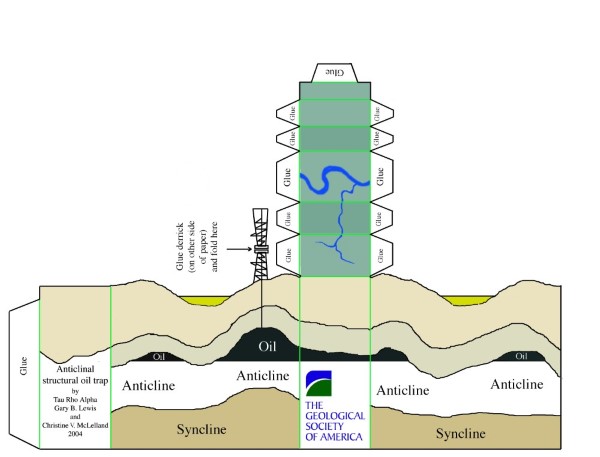Earth Science Week Classroom Activities
Oil Trap Model

Activity Source:
Geological Society of America. Adapted with permission.
Crude oil is a liquid hydrocarbon that is thought to have formed from the accumulation and burial of mostly marine organisms in a low-oxygen environment. This environment prevents decay of the organisms, trapping the organic matter and converting it to hydrocarbons.
Because oil is a liquid that is lighter than water, it naturally rises through the pores of rocks in which it forms towards the surface. Unless it comes across a layer of rock or structure that is impermeable and traps the oil, it eventually will bubble up to the Earth’s surface.
Petroleum geologists study Earth’s rock layers, looking for places where oil- generating rocks might occur. These geoscientists try to determine whether geologic structures trap the oil in reservoirs which can be drilled and pumped to recover the oil. One such type of trap occurs when rocks have been folded into anticlines and synclines, with oil caught under folded impermeable layers, as this 3-D model shows.

GSA
Materials
- Safety scissors and glue
Procedure
- Use scissors to cut out the model at right. Fold inward along vertical green lines, allowing the pictured stream to rest on the top of the model. Follow the instructions on the model for the pictured derrick. Glue tabs to opposite inside surfaces.
- Discuss how the 3-D model illustrates the geology of oil deposits. What challenges do you think petroleum geologists must overcome to recover oil?
Have students use paper models of different types of oil traps.
